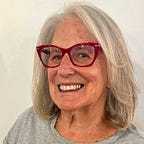Communities of Practice as Neural Networks
Almost two years ago, John and Kat Troyer founded the Influence Marketing Council, a “community of practice” for marketers trying to make sense of marketing to and through influencers in the B2B tech space. They knew that influence marketing, although used differently from the way consumer influencer marketing is used, was becoming a major force for B2B marketers, who were looking for brand advocacy and engagement leading to sales.
One of the IMC’s original goals was to develop metrics for the ROI of this new channel, which developed out of old school user groups and product tech support, but when the social web took over became instantaneously aligned with marketing.
This month, the IMC monthly meeting welcomed Rachel Happe, analyst and founder of the Community Roundtable, as the expert. (If you’ve never been on one of John and Kat’s monthly IMC calls, you’re missing something. They’re a great learning experience and usually a fascinating conversation.)
Today’s was an especially interesting call for me because Happe has done seven years of research into communities of practice to find out what makes them useful and productive. The analytics are terrible in the community space, because most websites are architected around content, rather than around individual engagement, and communities should probably be judged on engagement. Nevertheless, Happe questioned people and has come up with some thoughts.
ROI determination is made more difficult because many communities were spun up during Web 2.0 without a strategic purpose. Without an agreed upon strategy, it’s difficult to tell if a community is successful. As a result, community managers have traditionally failed to get properly resourced by their companies. And that’s a chicken/egg phenomenon.
However, that’s changing. The C-suite has finally discovered the value of communities. Of course communities still need to be productive for the business, and the central question is what makes a productive community? There are two extremes of communities — those that are highly engaged but not valuable to the company’s business, and those that are used primarily as marketing channels and are therefore often dead. But there is that space on the Venn diagram of any business community where the interests of the business can overlap those of the community. While that’s necessary for a productive community, it’s not sufficient. A shared perceived value must also be there. That’s when a community will get the resources it needs.
John Troyer, in his years of working on community at VMWare, serving as a VMWare influencer, and running the IMC, has come to the conclusion that communities of practice are the modern form of professional development, and that the next need is for a community of practice for the influencers themselves — in this case the technologists. In some ways, it’s the reverse (or is it the obverse) of the IMC, but it will serve the same purpose.
Back in the day, professional development meant taking classes, attending webinars, and coming away with certifications. Today, professional development is done most effectively through these communities of practice in which people of approximately similar ability grow together collaboratively. These communities are like GANS — deep neural networks of the same general capability that push each other to become better. Except unlike the neural networks of GANS, communities are not a zero-sum game.
Quite the opposite. In the best communities of practice, everyone grows better at their jobs.
